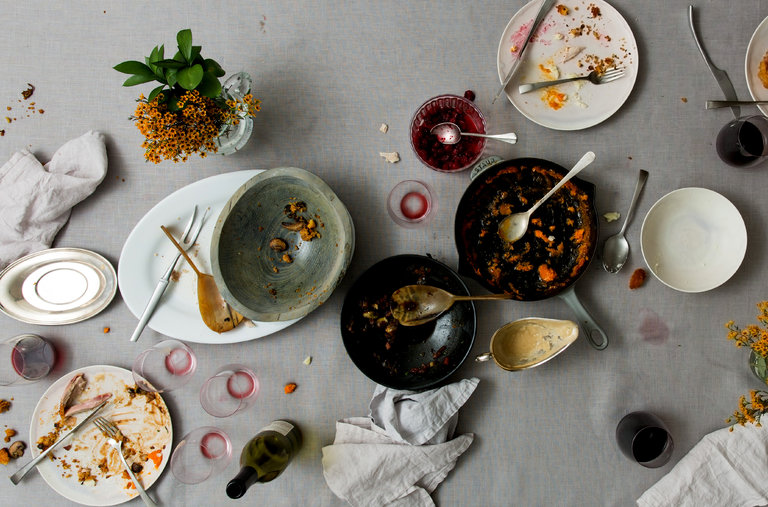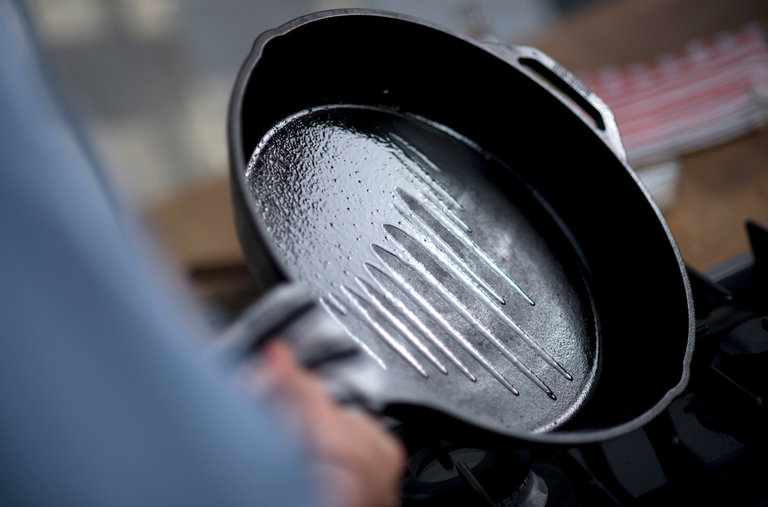There’s no shortage of information on how to prepare Thanksgiving dinner, but there’s surprisingly little about how to deal with its aftermath.
Cleaning may not be as glamorous as cooking, but it is just as important, if not more important, at least for the hosts. To help, our writers and editors have spent thousands of hours testing and studying dishwashers to table linens. Along the way, we’ve learned a thing or two about how to keep them clean. Here are some tips.
Help your dishwasher do its best
This may come as a shock, but rinsing dishes before putting them into a modern dishwasher hurts more than it helps.
As our appliance editor Liam McCabe explains in his review of the best dishwashers, since about 2010, most dishwashing detergents have been enzyme-based. Unlike traditional detergent, which lifts grease and grime off surfaces, enzyme-based cleaners digest culinary gunk where it sits, and makes it easier to then rinse away. They work better the longer they stay in contact with the dishes, and they actually benefit from having a little leftover grime to chew on. But if you pre-rinse everything, the cycle may end prematurely since the waste water will run clear through the dishwasher’s soil sensor.
Instead of rinsing, Liam recommends scraping off any chunky solids (a rubber spatula works great for this) but leaving “some goop and crusty stuff.” That’ll ensure that your dishwasher runs a full cleaning cycle. Additionally, be sure to add some rinse aid in order to avoid spots on your glasses.
Destain your stainless
Although much stainless cookware is advertised as dishwasher-safe, cleaning it by hand is just better, both for your dishwasher and for the life of your cookware. For one thing, that cookware takes up a lot of room in the dishwasher. For another, when it comes to burnt-on food, muscle helps.
In our stainless skillet review, we explain that just heat and water can do a lot of the work for you. After wiping out grease and food bits, a little hot tap water and a long-handled dish brush should do the rest of the work for you. We have other tips to take care of and prolong the life of your stainless cookware in that review, too.
If you don’t have the opportunity to clean while the pan is still hot off the stove, let it soak overnight with some strong dish soap. A green Scotch-Brite pad, or a paste of baking soda and water (plus a sponge and elbow grease,) will take care of what’s left the next morning.
Degrease your table linens
When it comes to cleaning stained linens, heat is your enemy and water is your friend. So first rinse any stains in copious cold water to wash away as much of the offending material as possible.
Then, for grease spots — the most likely Thanksgiving offenders — rub some dish or laundry detergent into the stains (adding a drop or two of cold water to thin it out) to begin breaking up the grease. Next, launder the stained items as usual, again in cold water. Finally, let them air dry; heat from a dryer will set any stains that survived.
Check them again for grease stains, and if necessary repeat the soap/wash/air-dry cycle. If you’re facing other types of messes, our guide to table linens has tips on dealing with wine/coffee/berry stains (e.g. cranberry sauce), candle wax, and lipstick.

Clean cast iron and wood cutting boards without damaging them
Despite many warnings against doing so, you can use soap to clean cast-iron pans, and you probably should.
“The soap thing drives me crazy,” said Mary Theisen, a vintage-cast-iron expert and proprietor of The Pan Handler, a site where enthusiasts can browse and buy antique cast iron cookware. “As long as it’s seasoned properly, you’re not going to wreck your pan if you use a little bit of soap. If I have a really dirty pan, I’d rather use the soap because I don’t want to have a pan with food particles sitting around.”
Additionally, a stiff plastic brush helps, but you should avoid abrasive cleaners. Afterward, dry your pan thoroughly, wipe it with a thin layer of oil, and cook with it again soon. Ms. Theisen offered this — and some other tips to care for and properly season cast iron — in our rundown of the best cast iron skillets.
If you own a wood cutting board, don’t soak it — the wood can swell and split. If you used it to cut up greasy, protein-y stuff, such as turkey, wash it in hot soapy water, rinse it thoroughly, and dry it on a dish rack, or anywhere it can get good air around it. If you’ve used it only to cut up vegetables, a wipe with a vinegar-water solution is really all it needs. After the guests are gone, don’t forget to periodically care for your cutting boards, and it’ll be there for you next Thanksgiving.
A version of this article appears at Wirecutter.com.





